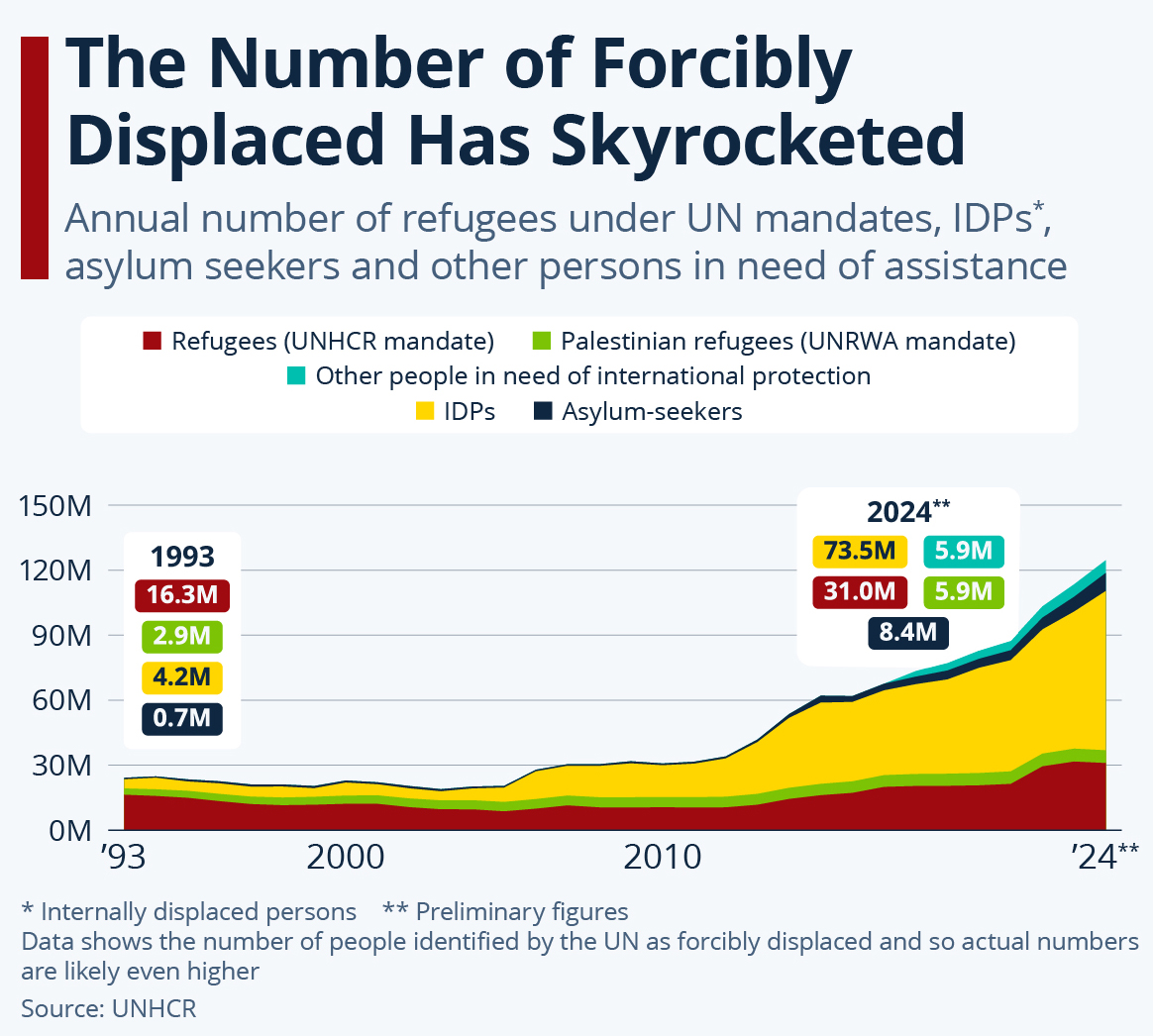Context:
The United Nations High Commissioner for Refugees (UNHCR) released its Global Trends Report on Forced Displacement in 2024, offering sobering insights into the scale and complexity of human mobility driven by violence and instability.
What Is Forced Displacement?
Forced displacement refers to situations in which individuals are compelled to flee their homes due to persecution, armed conflict, generalized violence, human rights violations, or natural disasters. Unlike voluntary migration, it is an involuntary act driven by survival needs, often leaving people in highly vulnerable conditions without legal status, access to services, or economic opportunities.
Key Findings of the 2024 Report
- Total Displaced: At the end of 2024, an estimated 123.2 million people worldwide were forcibly displaced — a record high.
- Children Disproportionately Affected: 40% of all forcibly displaced persons were children, highlighting the long-term humanitarian and development implications.
- Major Source Countries:
- A third of all displaced persons came from just four countries: Sudan, Syria, Afghanistan, and Ukraine.
- Internally Displaced Persons (IDPs): A staggering 73.5 million people remained displaced within their own countries due to violence or disaster-related crises.
Major Challenges of Forced Displacement:
1. Food Insecurity: Disrupted livelihoods, restricted access to resources, and logistical challenges in delivering aid.
2. Public Expenditure Pressures: Hosting displaced populations strains government resources, including provision of basic services and security.
3. Social Tensions: Competition for resources leads to friction between host communities and displaced groups.
4. Unemployment and Economic Strain: Demographic shifts affect labor markets, leading to job displacement and reduced access to essential services.
Initiatives to Address Forced Displacement
Forced displacement is a complex and pressing global issue, and various initiatives have been undertaken to address it. Some key initiatives include:
- A non-legally binding framework for international migration
- Adopted by a majority of UN member states
- Aims to promote safe, orderly, and regular migration
- Established by the World Bank in 2009
- Enhances the global development response to forced displacement
- Aims to support countries in addressing the root causes of forced displacement and promoting sustainable solutions for displaced populations
About United Nations High Commissioner for Refugees (UNHCR):
- Established by the UN General Assembly in 1950
- Headquarters: Geneva, Switzerland
- Purpose: Protecting the rights and building a better future for people forced to flee their homes due to conflict and persecution
- Achievements: Received the Nobel Peace Prize in 1954 and 1981
Conclusion
The record number of 123.2 million forcibly displaced people is a stark reminder of the world's fragile state. Behind every number is a human story of loss, resilience, and hope. The Global Trends Report 2024 by UNHCR calls on governments, NGOs, and global citizens alike to act with urgency, compassion, and resolve to turn displacement from a chronic crisis into a challenge met with humanity and foresight.







